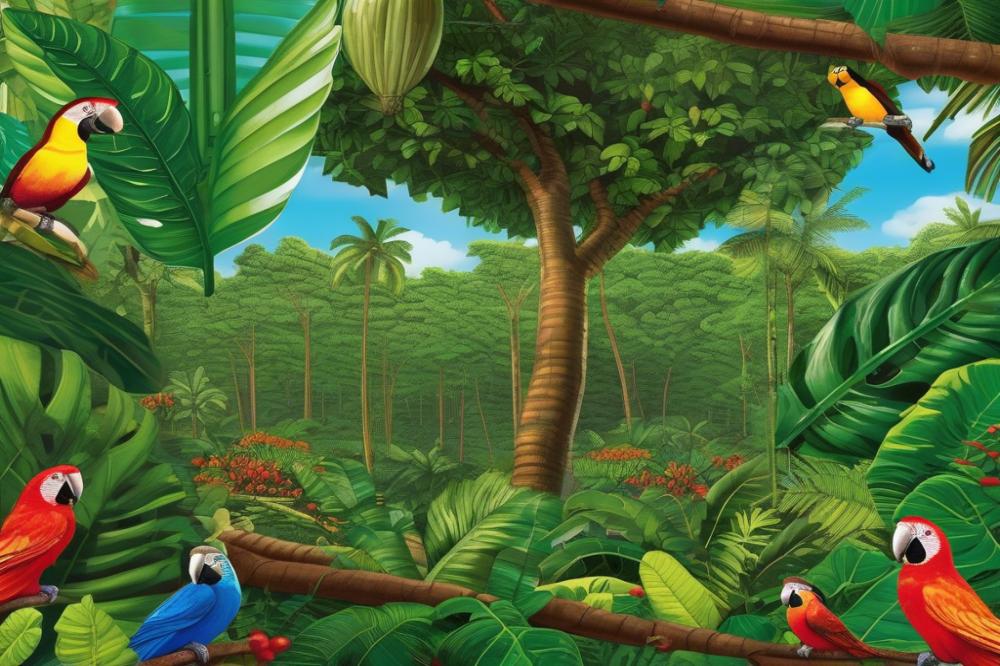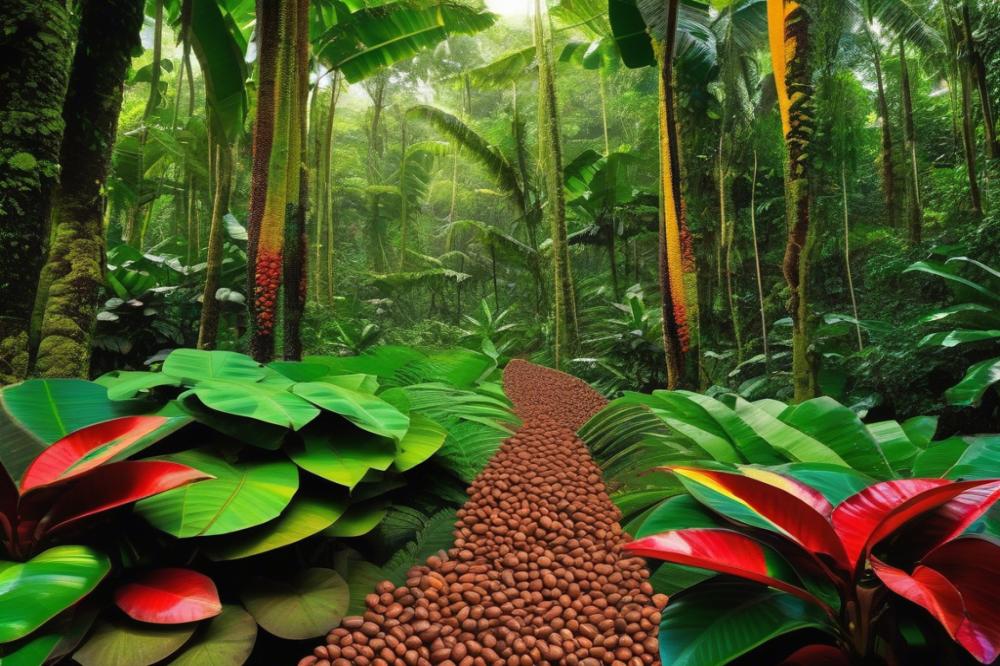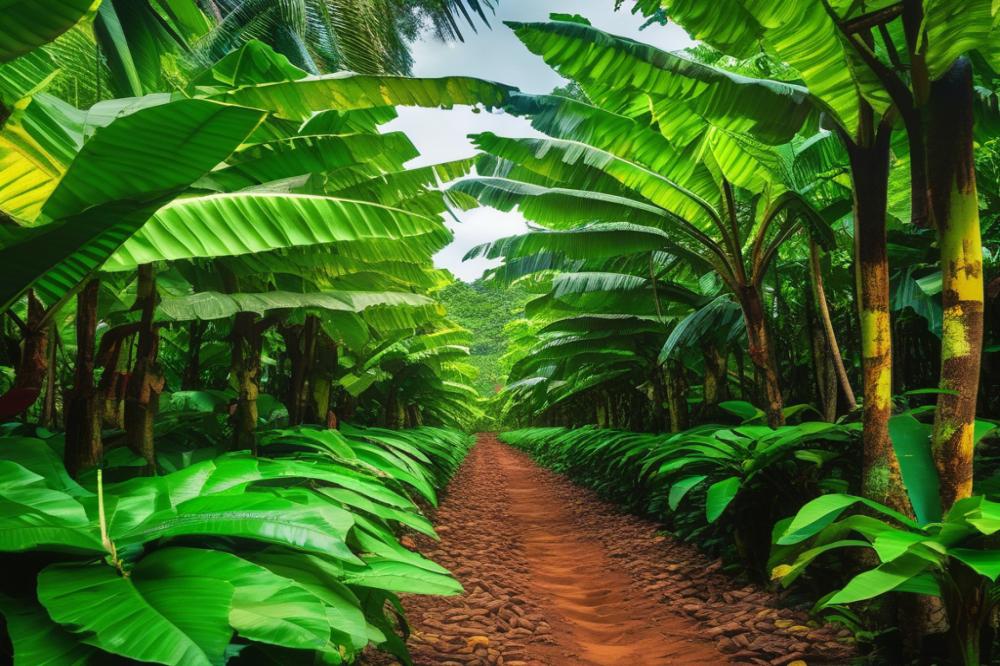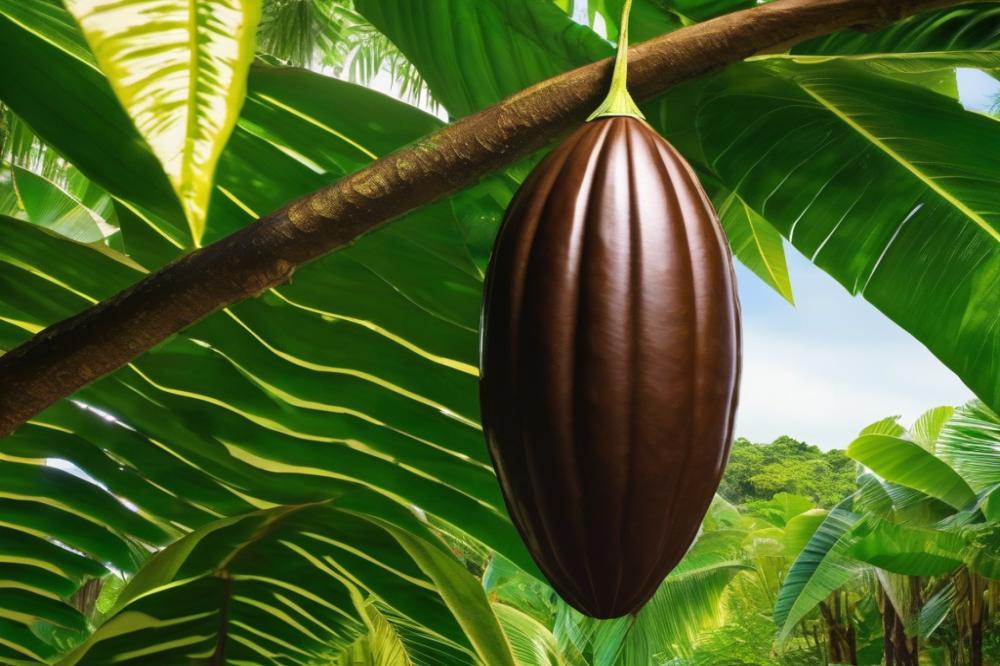The cocoa Plant’s Role in biodiversity and ecosystems
The cocoa plant, the source of chocolate’s allure, holds immense significance in the global economy. Millions of people depend on the cultivation of this crop for their livelihoods. Chocolate production has become a booming industry, captivating taste buds worldwide. However, the impact of cocoa farming reaches far beyond economies and indulgence. It intertwines closely with the health of our ecosystems.
biodiversity involves the variety of life on Earth, including the many species that call different environments home. Healthy ecosystems thrive on this variety, relying on complex interactions among plants, animals, and microorganisms. The Cocoa plant flourishes primarily in tropical rainforests, which are rich in biodiversity. Here, it benefits from a range of natural processes and contributes to the overall health of its habitat.
In regions where sustainable farming techniques are employed, cocoa cultivation can enhance biodiversity rather than diminish it. Agroforestry practices, which integrate trees and crops, help maintain tree cover and provide shelter for various species. These methods improve soil health and create a supportive environment for pollinators, essential for many plants, including cocoa. Without these insects, yields would plummet.
Conservation efforts focusing on cocoa-growing regions can protect natural habitats, thereby preserving the intricate web of life. Managing these landscapes properly is vital for both the crops and the surrounding wildlife. When cocoa farmers adopt responsible practices, they play a pivotal role in safeguarding biodiversity while also securing their future. Balancing agriculture with ecosystem health is essential for thriving communities and a sustainable planet.
The Importance of Cocoa in Rainforest Ecosystems

The Cocoa plant thrives in the lush environment of rainforest ecosystems. These forests provide a warm climate, high humidity, and ample shade, all necessary for healthy growth. In their natural habitat, cocoa trees flourish beneath the canopy, forming part of a diverse ecosystem. This dense vegetation supports various forms of life, creating a complex web of connections.
Agriculture that focuses on cocoa can have both positive and negative effects on the environment. Responsible farming practices, like agroforestry, play a crucial role in promoting biodiversity. By integrating cocoa cultivation with local tree species, farmers can maintain a balanced ecosystem. Such practices not only enhance biodiversity but also contribute to soil health.
Pollinators, such as bees, are essential for the reproduction of cocoa plants. The presence of these species is vital for chocolate production. When farmers take steps to protect pollinator habitats, they help sustain their production while benefiting the broader rainforest environment. This interdependence illustrates how agricultural practices can align with ecological conservation.
Additionally, sustainable farming techniques reduce the need for chemical fertilizers and pesticides. These chemicals can harm surrounding wildlife and degrade soil. Instead, methods that emphasize natural pest control and organic fertilizers can create a healthier growing environment. By enhancing soil health, farmers improve crop yields while safeguarding the ecosystem.
Cultivating cocoa in harmony with nature supports various species’ habitats. Diverse plant life offers shelter and food sources to wildlife, including birds and insects. When various species flourish, it strengthens the entire ecosystem. As a result, these practices can counteract the threats posed by deforestation and habitat loss.
In conclusion, cocoa cultivation serves as a bridge between agriculture and biodiversity in rainforest ecosystems. Its potential for positive ecological impact makes it an important plant in pressing times. By prioritizing sustainable farming practices, we can reinforce the balance of rainforest ecosystems while enjoying the benefits of chocolate production.
Cocoa and Agricultural Practices

Cocoa cultivation greatly influences both the environment and agricultural methods. Traditional techniques often involve smallholder farms scattered throughout rainforest regions. These methods emphasize local biodiversity. Farmers rely on their knowledge of the land, using shade trees to protect crops from harsh sun. This practice not only enhances habitat for various species but also supports pollinators that are crucial for fruit production.
Modern agriculture sometimes adopts monoculture practices. Such methods can lead to soil degradation and reduced biodiversity. Vast expanses of land are cleared for vast chocolate production. This approach disrupts ecosystems and increases vulnerability to pests and diseases. Heavy reliance on chemical fertilizers and pesticides further harms soil health and water quality.
Switching to sustainable farming methods offers numerous advantages. These practices promote crop diversity through intercropping and cover cropping. Farmers can build resilient ecosystems that require fewer external inputs. Agroforestry combines trees with crops, improving soil structure and moisture retention. This method also provides shade and habitat for wildlife, enhancing overall ecosystem services.
Enhancing biodiversity in cocoa farms benefits not only the environment but also the farmers. Healthier ecosystems are more self-sustaining and require less human intervention. Using fewer chemical inputs reduces farming costs and minimizes health risks for workers. As pollinators thrive, farmers notice increased yields and quality in their crops.
Conservation efforts can work in tandem with cocoa production. Protecting rainforest areas helps retain local flora and fauna. These preserved areas act as vital corridors for wildlife, maintaining balance within ecosystems. Employing sustainable practices allows farmers to produce chocolate while acting as stewards of the land.
Ultimately, the choices made in cocoa agriculture have far-reaching impacts. The importance of sustainable practices cannot be overstated. They allow for harmony between farming and nature. Proper methods safeguard the health of soil, support local species, and contribute to a more sustainable future.
Cocoa as a Habitat for Species

The cocoa plant plays a significant role in supporting various species. It thrives in tropical rainforests, creating a rich habitat for countless organisms. While chocolate production is at the forefront of cocoa’s value, its ecological contributions are noteworthy. Many animals and plants depend on this agricultural system for survival.
Cocoa farms can serve as crucial habitats for pollinators like bees and butterflies. These insects are important for the pollination of many plants. In fact, a thriving insect population can lead to improved crop yields. Farmers who practice sustainable farming methods often see benefits beyond just cocoa. Biodiversity within these farms contributes to healthier ecosystems.
In addition to pollinators, the understory of cocoa plantations provides shelter for various birds and small mammals. Different types of flora grow alongside the cocoa plants, adding to the biological diversity. These plants can attract beneficial insects, promoting soil health and pest management. In this way, cocoa farming supports both agricultural production and conservation efforts.
Agroforestry practices enhance the habitat value of cocoa farms. Trees planted among cocoa plants can provide shade, helping to regulate soil temperature and moisture. This setup not only protects fragile ecosystems but also enriches the landscape. Such practices can create a more resilient environment against climate change.
Overall, cocoa’s relationship with wildlife reflects the interconnectedness of agriculture and biodiversity. When farmers prioritize habitats for various species, they enrich their own production systems. The health of the ecosystem directly influences the success of agricultural activities. Thus, safeguarding these habitats is vital for future sustainability.
The Relationship Between Cocoa and Soil Health
Cultivating cocoa has profound impacts on soil health and nearby ecosystems. Farmers often use various practices to improve soil quality, which ultimately supports sustainable farming. Healthy soils provide nutrients essential for plant growth and biodiversity.
A diverse mix of crops supports better soil structure. When cocoa is grown alongside other plants in agroforestry systems, it creates a habitat rich in variety. This method encourages microbial life, which plays a critical role in soil fertility. Healthy microorganisms break down organic matter, releasing nutrients into the ground.
Some farmers practice shade-grown systems. Trees provide natural cover for cocoa plants while offering a habitat for wildlife, including beneficial pollinators. This type of farming not only protects soil integrity but also enhances the ecosystem. It allows farmers to produce chocolate while preserving the delicate balance of the rainforest.
Negative effects can arise from poor agricultural practices. Monoculture, or planting a single crop over and over, depletes soil health. Soil erosion becomes a problem when there’s little vegetation to anchor it. Fertility suffers, leading to lower yields and a need for chemical fertilizers.
Using organic matter in the soil creates a cycle of health and productivity. Composting and mulching are examples of techniques that can improve soil quality. These methods contribute to nutrient retention. They also promote biodiversity by creating habitats for insects and beneficial organisms.
Pollinators, such as bees, are vital for crop production. If the surrounding environment is rich in diverse plants, these insects thrive. This added biodiversity supports the overall health of the ecosystem. It also ensures that cocoa plants can produce fruit more reliably.
Conservation practices are crucial to maintaining soil health. Techniques like cover cropping can help prevent soil degradation. They add organic material to the ground and reduce erosion. Additionally, these practices can increase water retention, which is essential for plant growth.
Ultimately, the relationship between cocoa cultivation and soil health is complex yet vital. Protecting and improving soil quality is essential for sustainable agriculture. Only by adopting better practices can farmers continue to produce chocolate while preserving the planet’s resources.
Conservation and the Future of Cocoa Farming
Current efforts in conservation are critical for farming practices. Various organizations are working to create models that support biodiversity. In the dense rainforest regions, protecting wildlife habitats is essential. These areas are home to numerous species, including vital pollinators. Healthy populations of pollinators are necessary for the successful growth of crops. Without them, yields could decrease dramatically.
Agroforestry practices offer one promising avenue for sustainable farming. This technique combines trees and crops in a way that promotes biodiversity. Farmers can grow multiple species alongside each other. Such diversity can lead to healthier ecosystems and more resilient agriculture. Trees can provide shade for young plants, improving soil health over time.
Integrated approaches are increasingly important. Collaboration between conservationists and farmers can create better outcomes. Certain organizations support training farmers in sustainable practices. They focus on reducing the need for harmful chemicals. These techniques can protect delicate ecosystems from degradation.
Habitat restoration is another crucial aspect. Efforts are underway to restore areas that have been cleared for farming. This brings back native species and stabilizes the environment. Additionally, some farms practice organic methods that avoid chemical pesticides. This not only helps pollinator populations but also protects water sources.
Looking at the future, sustainable chocolate production must be a priority. Farmers who prioritize ecological health will benefit in the long run. By prioritizing practices that enrich the soil, they can mitigate climate impacts. Crop rotation and cover cropping are just a few strategies worth considering. These steps can enhance soil health, reducing erosion and nutrient loss.
Biodiversity must be viewed as an asset rather than an obstacle. Embracing a more holistic view can lead to more productive farming systems. Market demand for ethically produced chocolate is growing. Consumers increasingly seek products that support environmental sustainability. Responding to this demand may help drive lasting changes in farming practices.
Final Thoughts
The cocoa plant plays a vital role in promoting biodiversity and supporting healthy ecosystems. It thrives within diverse tropical environments, creating habitats for many species. These plants are not just vital for chocolate production; they also contribute to the overall health of their surroundings. By encouraging animal life and protecting plant diversity, these plants become essential players in the management of natural habitats.
However, not all farming methods are equal. Sustainable practices in agriculture are crucial for preserving the delicate balance of ecosystems. Responsible chocolate production can reduce deforestation and lower carbon footprints. When farmers use methods that protect both their crops and the environment, they foster a landscape where both can thrive.
Future generations will depend on the choices we make today. Encouraging sustainable practices will help conserve the resources that nourish us all. As consumers, we should support brands that prioritize environmental responsibility. Together, we can contribute to a healthier planet that supports vibrant ecosystems.
As we enjoy our chocolate treats, let’s remember the role that these plants play in our world. Making informed choices can lead to a collective effort that benefits everyone. The time to act is now.



